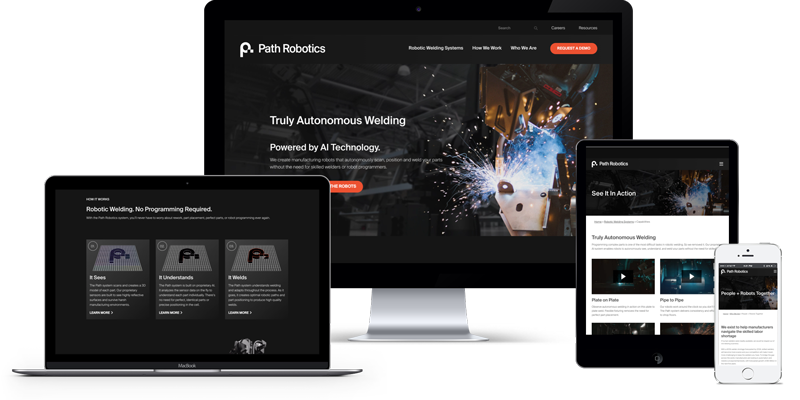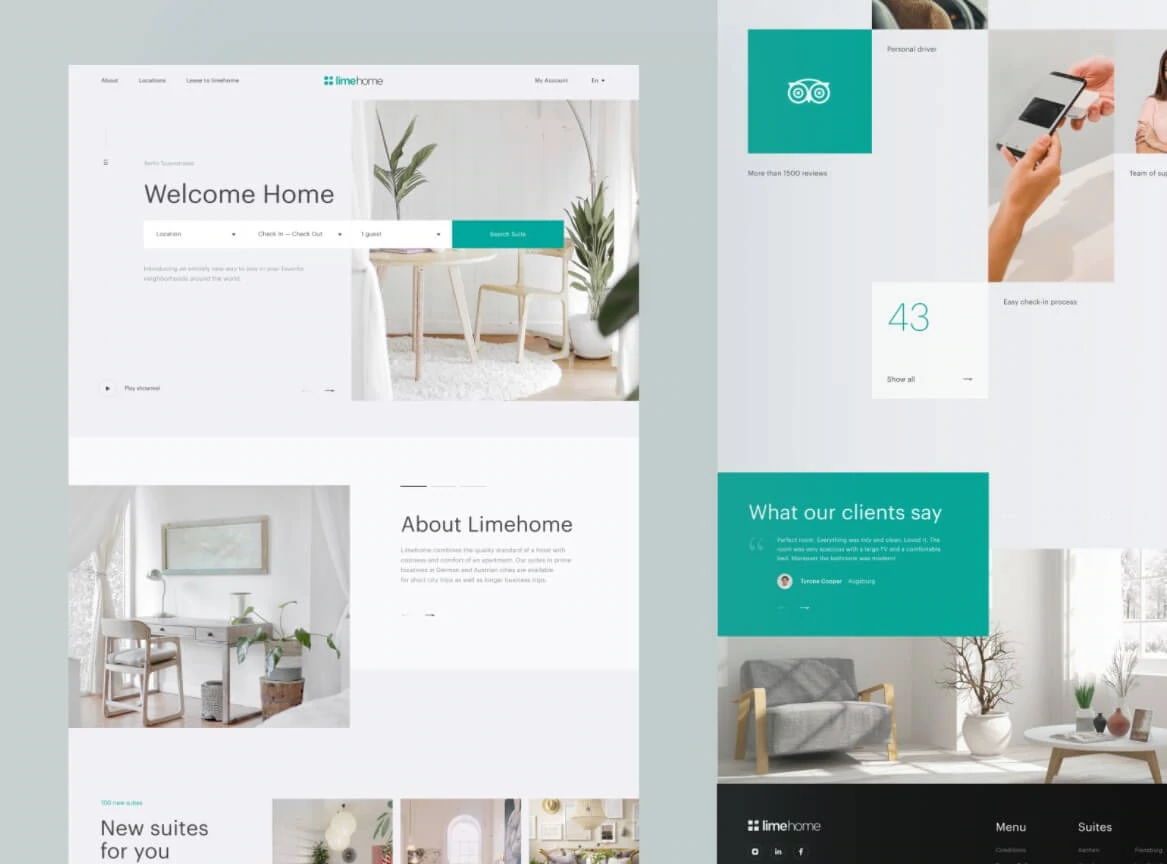Secret Techniques for Executing User-Centric Website Style to Increase Engagement
When taking into consideration the execution of user-centric website layout, particular approaches are crucial in enhancing interaction. Complete research study right into customer requirements and preferences forms the structure, assisting the development of user personas to educate layout selections. Individualizing material enhances individual fulfillment, and robust access features broaden reach.
Comprehending User Demands
Recognizing individual demands is a fundamental step in the procedure of user-centric website design. Methods such as studies, interviews, and individual screening can give useful qualitative and measurable information about how individuals interact with the internet site.
Evaluating this data enables developers to create detailed user identities that stand for the different sectors of the target audience. These personas help inform layout decisions by highlighting specific user objectives and challenges, directing the development of functions that resolve these needs effectively. Furthermore, comprehending the context in which customers run-- such as their atmosphere, device preferences, and time restrictions-- can even more refine the layout approach.
Compassion plays an important role in this process, making it possible for developers to see the site from the user's perspective. By focusing on individual needs, the layout procedure becomes extra concentrated, stopping the addition of unnecessary elements that can clutter the customer experience. Ultimately, a deep understanding of customer demands contributes in crafting a site that is both functional and meaningful.
Creating Instinctive Navigating
Having developed a detailed understanding of user demands, the next action in user-centric site design includes creating user-friendly navigation. Efficient navigating is essential to customer contentment, influencing exactly how conveniently users can locate information and total jobs. To accomplish intuitive navigation, developers should focus on simpleness and clarity, ensuring that the navigating framework is logical and constant throughout the website.
Organizing web content right into a clear hierarchy is critical. Website Design. Making use of acquainted tags and icons can assist customers effortlessly, lowering cognitive load and improving the general customer experience. A well-designed navigation bar must be plainly placed, enabling individuals to recognize their present location and conveniently explore other sections of the web site
It is likewise vital to include interactive aspects such as breadcrumbs and search performances to assist customers in browsing complicated websites. These functions offer additional paths and enhance the accessibility of web content, accommodating numerous user preferences and habits.
Evaluating navigating with actual customers is vital to recognize prospective pain factors and make certain functionality aligns with user assumptions. Normal comments loopholes and repetitive renovations can aid maintain an efficient navigation system that adjusts to developing customer demands, ultimately increasing involvement and satisfaction.
Producing Receptive User Interfaces
Usually, creating receptive interfaces is a critical facet of modern internet style, guaranteeing that sites are accessible and useful across a plethora of devices and display sizes (Website Design). This flexibility is vital in a landscape where users gain access to web content through mobile phones, desktops, tablets, and laptops, each with varying resolutions and positionings. The primary objective of receptive layout is to boost customer experience by maintaining ideal readability and use, no matter of the gadget utilized
To attain this, internet developers utilize versatile grid layouts, fluid photos, and CSS media questions. Flexible grids enable internet site components to resize proportionally, while liquid pictures ensure visuals scale suitably without losing top quality. Media queries play an essential duty by applying different styles based on the tool's qualities, such as height, orientation, and size, therefore tailoring the format to the user's screen.
Additionally, responsive interfaces contribute to improved search engine optimization (SEO) by offering a seamless customer experience, which subsequently can decrease bounce rates and increase website involvement. In recap, taking on receptive style is not just a technological factor to consider however an essential method for promoting a user-centric web environment that fulfills the requirements of a diverse audience.

Customizing Web Content Experience
Personalizing content experience is a crucial component of user-centric website layout that involves customizing web content to fulfill the distinct choices and habits of individual users. This approach not only boosts user contentment however also promotes deeper engagement, as visitors are more probable to connect with web content that reverberates with their needs and interests. By leveraging information analytics and individual feedback, organizations can determine patterns and trends that inform the personalization of web material.
Including customization methods can range from simple modifications, such as recommending products based upon searching background, to much more innovative strategies like dynamic material that adjusts in real-time to a customer's interactions. Customized touchdown web pages can considerably raise conversion prices by providing users with relevant details and uses that line up with their previous activities and choices.
In addition, using man-made knowledge and device understanding can even more fine-tune material personalization by continuously finding here out from user actions and adjusting to emerging fads. This not just enhances the individual's journey yet also develops brand commitment, as clients really feel recognized and valued. Ultimately, personalizing the material experience is a vital approach for businesses aiming to produce an extra interesting and purposeful communication with their target market.
Enhancing Access Features
Enhancing ease of access functions is an essential aspect of user-centric web site style, making sure that electronic material is functional by every person, consisting of individuals with specials needs. This strategy not just complies with lawful requirements such as the Americans with Disabilities Act (ADA) and the Internet Web Content Ease Of Access Guidelines (WCAG) however also significantly expands a website's audience reach. By integrating attributes like keyboard navigating, display visitor compatibility, and alternate message for photos, internet sites end up being a lot more comprehensive, giving a smooth experience for users with visual, acoustic, or electric motor disabilities.
Including click over here receptive layout aspects is critical, promoting accessibility on different devices and display dimensions, consequently fitting users with various preferences and needs. Furthermore, comparison ratios and text dimension modifications can enhance readability for people with visual challenges. Supplying clear and concise content framework, such as headings and checklists, help comprehension and navigating, especially for users with cognitive handicaps.
Regular accessibility audits need to be conducted to recognize and rectify possible barriers, making sure ongoing conformity and use. By prioritizing availability, businesses not just foster inclusivity but likewise boost total customer engagement and contentment, eventually driving higher conversion prices and strengthening brand commitment.

Conclusion
Including user-centric layout approaches dramatically improves internet site interaction by prioritizing the demands and preferences of individuals. Thorough study helps with the production of user personalities, leading targeted style choices. Intuitive navigating and responsive user interfaces enhance use browse this site and accessibility throughout devices. Customizing web content based on user actions increases contentment, while durable availability attributes expand audience reach. Collectively, these strategies create a meaningful on the internet experience, fostering much deeper engagement and communication with the web site.
Thorough research right into user requirements and choices develops the foundation, directing the production of customer characters to educate style selections. Techniques such as studies, meetings, and individual testing can give beneficial qualitative and measurable data regarding just how individuals engage with the site.
By prioritizing user needs, the design procedure ends up being a lot more focused, avoiding the inclusion of unneeded elements that can mess the individual experience. Effective navigation is basic to individual satisfaction, affecting exactly how easily customers can locate information and full jobs. The use of acquainted labels and symbols can direct users easily, decreasing cognitive tons and enhancing the general user experience.